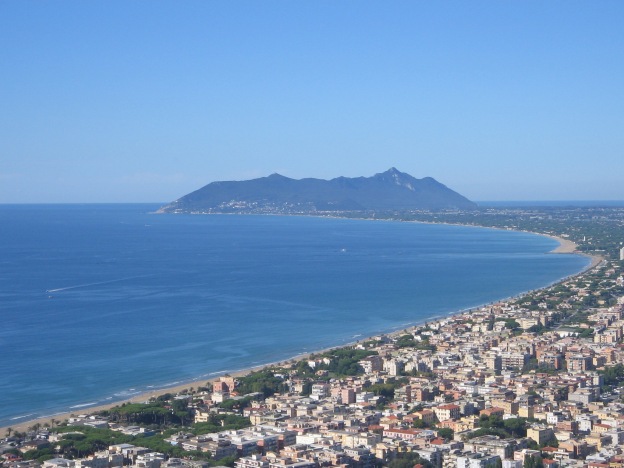For one thing............Italy now, from what i hear.........is a tale of two Italys, in general.......North and South.........teh North is rich, Tuscany, the Italian alps...............and the South, which is poor,,,,,,,,compared to the north.........the people are different as well......
Definition

The Italian Peninsula or Apennine Peninsula is one of the three peninsulas of Southern
Europe (the other two being the Iberian Peninsula and Balkan Peninsula), spanning 1,000 km from the Po Valley in the north to the central
Mediterranean Sea in the south. The peninsula is bordered by the Tyrrhenian Sea on the west, the Ionian Sea on the south, and the Adriatic Sea on the east. The interior part of the Apennine Peninsula consists of the Apennine Mountains, from which it takes its name, the northern part is largely plains and the coasts are lined with cliffs.
Excavations throughout
Italy reveal a modern human presence dating back to the Palaeolithic period, some 200,000 years ago. In the 8th and 7th centuries BCE
Greek colonies were established all along the coast of
Sicilyand the southern part of the Italian Peninsula. Subsequently, Romans referred to this area as
Magna Graecia, as it was so densely inhabited by Greeks.
Ancient
Rome was at first a small agricultural community founded circa the 8th century BCE that grew over the course of the centuries into a colossal
empire encompassing the whole Mediterranean Sea, in which Ancient Greek and
Roman cultures merged into one
civilization. This civilization was so influential that parts of it survive in modern law, administration,
philosophy and arts, forming the ground that Western civilization is based upon. In its twelve-century existence, it transformed itself from monarchy to republic and finally to autocracy. In steady decline since the 2nd century CE, the empire finally broke into two parts in 285 CE: the
Western Roman Empire and the
Byzantine Empire in the East. The western part under the pressure of Goths finally dissolved, leaving the Italian peninsula divided into small independent kingdoms and feuding
city states for the next 14 centuries, and leaving the eastern part sole heir to the Roman legacy.
BIBLIOGRAPHY
- There are no references yet.
Related Content

Following my visit to Minturnae (see previous post here), I continued my journey north along the Appian Way to reach Terracina, a picturesque town on the Tyrrhenian coast situated approximately half-way between Rome and Naples. Legend has it that Odysseus sailed here on his travels and surrendered to Circe’s enchantment. Circe is said to have lived... [
continue reading]

According to legend, Ancient Rome was founded by the two brothers, and demi-gods, Romulus and Remus, on 21 April 753. The legend claims that, in an argument over who would rule the city (or, in another version, where the city would be located) Romulus killed Remus and named the city after himself. This story of the founding of Rome is the best known but it is... [
continue reading]

Part of the remains of the Roman temple at Brixia (modern Brescia).

Remains of the Roman Capitolium, Brixia, (modern Brescia), Italy.
by Peter Turchin and Walter Scheidel
published on 06 March 2012
In times of violence, people tend to hide their valuables, which are later recovered unless the owners had been killed or driven away. Thus, the temporal distribution of unrecovered coin hoards is an excellent proxy for the intensity of internal warfare. We use this relationship to resolve a long-standing controversy in Roman history. Depending on who... [
continue reading]

by Wikipedia
published on 28 April 2011
Etruscan civilization is the modern English name given to the culture and way of life of a people of ancient Italy and Corsica whom the ancient Romans called Etrusci or Tusci. The origins of the Etruscans are lost in prehistory. The main hypotheses are that they are indigenous, probably stemming from the Villanovan culture, or that they are the result... [
continue reading]

by NormanEinstein
published on 26 April 2012
A map showing the extent of Etruria and the Etruscan civilization. The map includes the 12 cities of the Etruscan League and notable cities founded by the Etruscans. Based on a map from The National Geographic Magazine Vol.173 No.6 June 1988.
by Ingrid Edlund-Berry, The University of Texas at Austin
published on 27 November 2011
The ancient Romans took every precaution in their prayers or rituals to ensure that their deities were addressed by name or generically as a divine spirit, or numen. In many matters of ritual and tradition they acknowledged their dependence on Etruscan practices, Etrusca disciplina. The Etruscans were known for their interpretation of signs such as lightning... [
continue reading]
by www.metmuseum.org
published on 27 June 2014
1100 BCE Patterns of life change throughout Italy. Cremation is widespread and urn-field cemeteries are found as far south as Apulia and Sicily. Both bronze and pottery feature…
by www.metmuseum.org
published on 27 June 2014
14 CE Augustus dies and his stepson Tiberius (r. 14–37 CE) is left master of the Roman Empire. His assumption of power is the first step toward introducing the principle of dynastic…






No comments:
Post a Comment